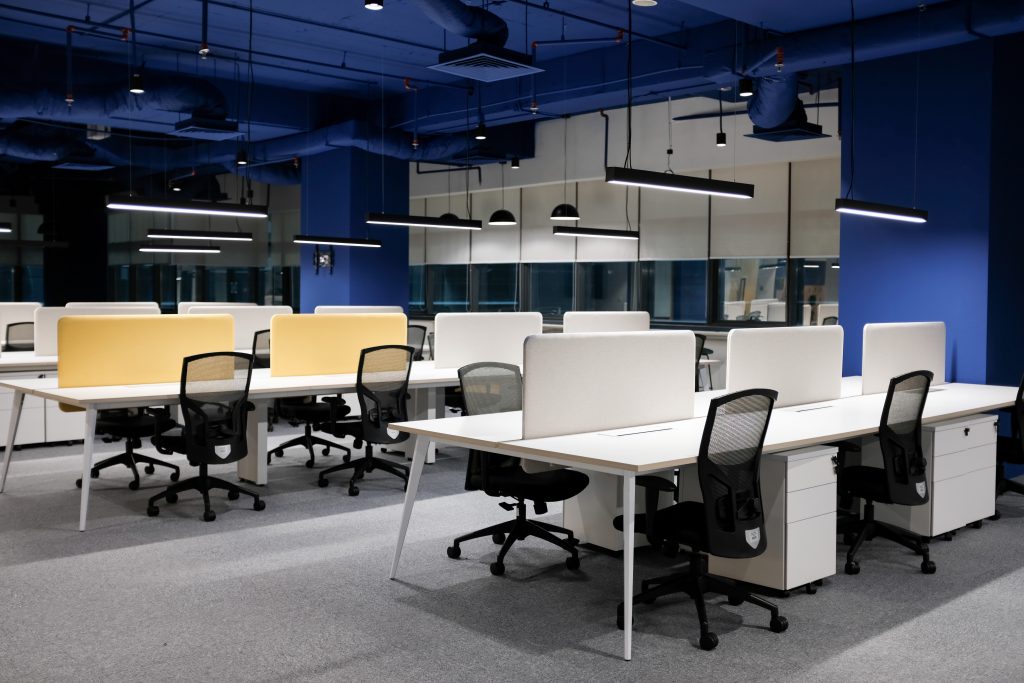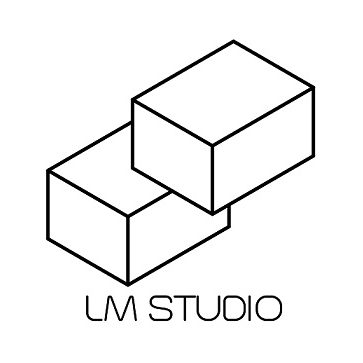
7 Key Points of a Good Office Design
A good office interior design is about more than just aesthetics – it’s about creating a functional, comfortable, and collaborative work environment that supports the productivity and well-being of employees. A well-designed office should take into account the needs of the employees and the overall culture and branding of the company. This includes considerations such as functionality, comfort, aesthetics, flexibility, sustainability, and collaboration. By incorporating these elements into the office design, businesses can create a space that fosters creativity, productivity, and employee satisfaction. So, a good office interior design is the one that takes into account all these elements and creates a space that is suitable for the employees to work in. Here are the 7 key features to focus on:
1. Functionality
A functional office interior is one that supports the workflow and activities of the employees, providing everything they need to work efficiently and effectively. This includes having sufficient workspace, storage, and access to technology and supplies. A functional office should also be organized and well-planned, with clear pathways and easy access to everything the employees need. It should also be adaptable and flexible, allowing for changes in the way work is done over time. A functional office should also take into account the specific needs and requirements of the employees, such as accommodating different types of work and providing spaces for individual and group work. Overall, a functional office is one that enables the employees to work efficiently and productively, with minimal disruptions and distractions.
2. Comfort
A comfortable office should also have amenities like access to clean restrooms, drinking water, and break areas. Additionally, the office should have sufficient ventilation and air quality to ensure that the air is fresh and free from pollutants. A comfortable office should also have a pleasant atmosphere, with an appealing color scheme and design elements that contribute to a positive work environment. Overall, a comfortable office is one that supports the physical and mental health of the employees, enabling them to work effectively and feel good about coming to work every day. The office should be comfortable for employees to work in, with good lighting, temperature control, and ergonomic furniture.
3. Aesthetics
An aesthetically pleasing office interior is one that is visually appealing and creates a cohesive look and feel. This can be achieved through the use of a pleasing color scheme, attractive design elements, and well-chosen furniture and decor. An aesthetically pleasing office should also have a sense of balance and proportion, with elements that are in harmony with one another. It should also be welcoming and inviting, with a pleasant atmosphere that makes employees and visitors feel at ease. An aesthetically pleasing office can improve morale and productivity, as it creates a positive work environment that people enjoy being in. Overall, an aesthetically pleasing office is one that is visually appealing and contributes to the overall atmosphere and atmosphere of the workplace.
4. Branding
An office interior with good branding is one that reflects the company’s brand and culture. This can be achieved through the use of company colors, logos, and other design elements that align with the company’s branding. A well-branded office should have a cohesive look and feel, with all of the design elements working together to create a strong and consistent brand image. The office should also be consistent with the company’s overall brand identity, including the tone and messaging of the company. A well-branded office helps to communicate the company’s values and personality to employees, clients, and visitors, and can contribute to a positive company image and reputation. Overall, an office interior with good branding is one that effectively represents the company’s brand and helps to communicate its values and identity.
5. Flexibility
A flexible office interior space is one that can be easily adapted and reconfigured to meet changing needs and technologies. This could include the use of modular furniture and open floor plans that can be rearranged as needed. A flexible office should also be adaptable to different types of work and activities, with spaces that can be used for individual and group work, meetings, and other activities. A flexible office should also have the necessary infrastructure and technology to support remote and virtual work, such as wireless internet and video conferencing capabilities. Overall, a flexible office is one that can be easily adapted to changing circumstances and technologies, enabling the employees to work effectively and efficiently no matter what their needs may be.
6. Sustainability
A sustainable office interior is one that is designed with environmental sustainability in mind. This could include the use of energy-efficient lighting and appliances, and materials that are recycled or sustainably sourced. A sustainable office should also have good indoor air quality, with sufficient ventilation and the use of low-emitting materials. Additionally, a sustainable office should be designed to minimize waste and promote recycling, with proper waste management systems in place. A sustainable office can not only help to protect the environment, but it can also reduce operating costs and improve the overall health and well-being of the employees. Overall, a sustainable office is one that is designed with environmental sustainability in mind, helping to reduce the company’s impact on the environment and create a healthier work environment for employees.
7. Collaboration
A collaborative office interior space is one that encourages collaboration and communication among employees. This could include the use of shared workspace, common areas, and technology that supports remote and virtual collaboration. A collaborative office should also have a layout and design that promotes interaction and the exchange of ideas, such as the use of open floor plans and the placement of workstations and meeting areas in close proximity to one another. A collaborative office should also have amenities that support teamwork, such as whiteboards, presentation screens, and video conferencing capabilities. Overall, a collaborative office is one that fosters a sense of community and encourages the exchange of ideas and knowledge, helping to improve teamwork and productivity.
Conclusion
In conclusion, a good office interior design is about more than just aesthetics – it’s about creating a functional, comfortable, and collaborative work environment that supports the productivity and well-being of employees. A well-designed office should take into account the needs of the employees and the overall culture and branding of the company. This includes considerations such as functionality, comfort, aesthetics, flexibility, sustainability, and collaboration. On the other hand, a bad office design can hinder productivity and employee well-being, with problems such as a lack of functionality, discomfort, poor aesthetics, inconsistent branding, and inflexibility. By incorporating the elements of a good office design and avoiding the pitfalls of a bad design, businesses can create a space that fosters creativity, productivity, and employee satisfaction.
